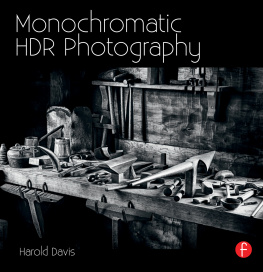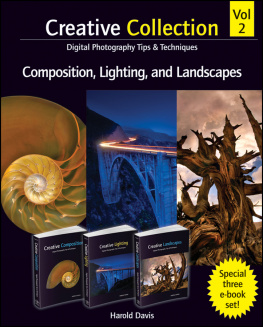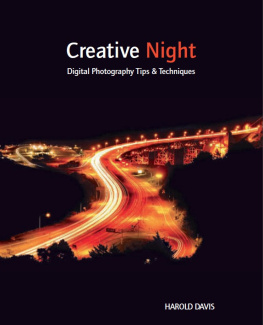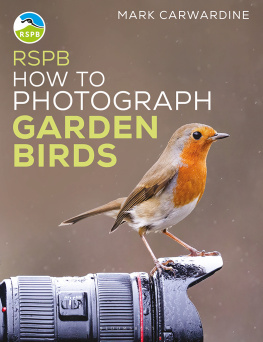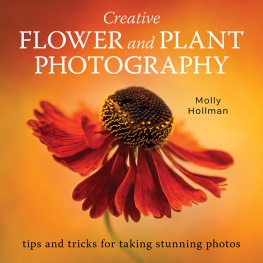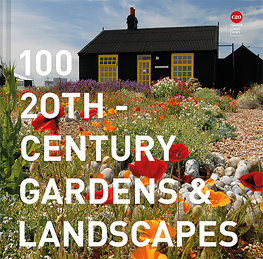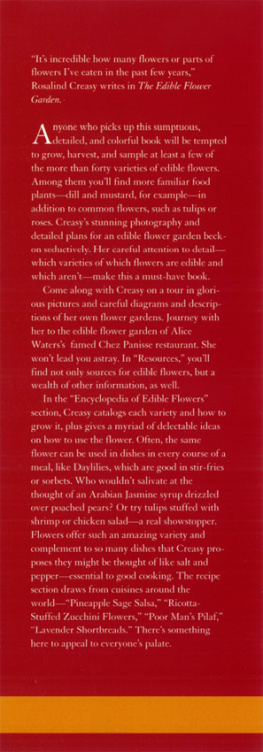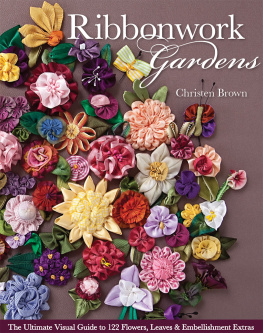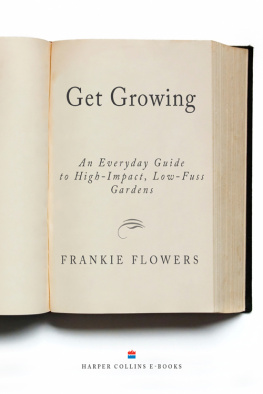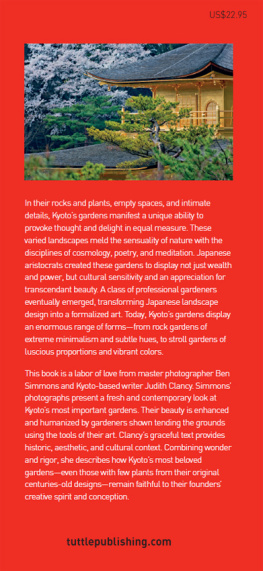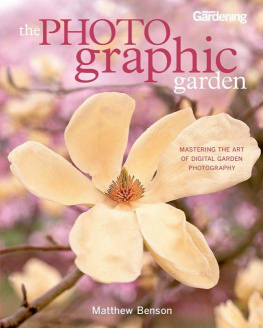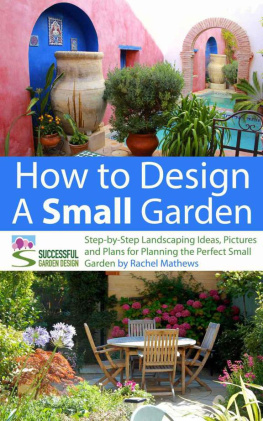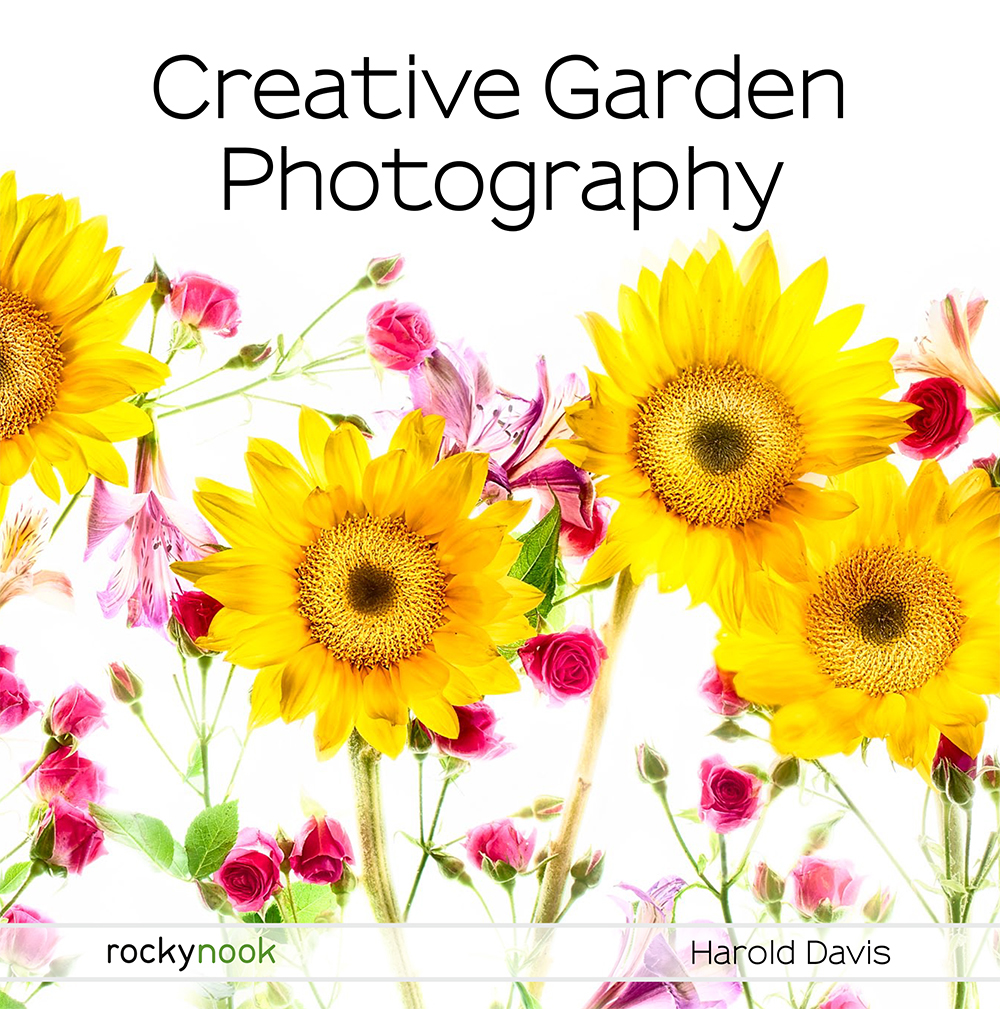Whats Not to Like about Gardens?
Your land must be a realm of peace
and content, and there must gardeners
be in high honour.
J.R.R Tolkein, The Two Towers
Whats not to like about gardens? I adore gardens, and I certainly hope you do, too! I also love flowers and beautiful landscapes. The world would be a better place with more beauty, flowers, and gardens.
Creative Garden Photography is a book about gardens, flowers, and landscapes and about what makes gardens special and beautiful. Its also about the photography of gardens. If you like gardens, I hope youll also like my photography of the natural world, ranging from the mundane to the grand, and use my book as a kind of armchair traveler might, to enjoy many aspects of the world of nature, from my backyard to France, Japan, and beyond.
Just to be clear: Creative Garden Photography is not just about gardens. This is a book focused on the intersection of gardens and all that can be in gardens, as well as photography and photographic techniques. I dont think considering photography solely as a narrow and technical topic works. You cant really contemplate garden photography without considering landscapes, lighting, and flower photography; in other words, the whole of photography of the natural world.
It is a photographic truism that to really capture the essence of a subject you need to understand it, and why you are photographing in the first place. Putting this another way, I like to say to my workshop students, Want to take better photos? Stand in front of more interesting things. Want to take really better photos? Become a more interesting person.
In the context of garden photography, becoming a more interesting person means getting a better understanding of what gardens are about, what kinds of gardens there are, where a specific garden fits in this framework, and what the components of a garden are. What makes a garden special? How can the unique sense of an individual place be rendered in imagery? What is the best way to photograph a flower?
Good photography of flowers is predicated on knowledge of light, lighting, photographic technique, and a sense of color theory. Its also important to know how to use a tripod and how to take advantage of the characteristics of depth of field. Some knowledge of botany can lead to even richer photos. Knowing more about flowers means one can take advantage of the blatant and riotous floral display of color and botanical sexuality to create excitement and feeling in an image that might otherwise seem run of the mill.

Baltazar ChrysanthemumThe Baltazar chrysanthemum is a new hybridized version of the spider chrysanthemum introduced in the Netherlands. This flower was created to travel well and have a long life as a cut flower in a vase, as well as to look spectacular in a garden.
I photographed this Baltazar chrysanthemum using a macro lens with a camera facing straight down on the flower blossom on a black velvet background (see for information on this technique).
Nikon D850, 50mm Zeiss Makro-Planar, 1/15 of a second at f/11 and ISO 64, tripod mounted.

Pretty Pink PeonyI love peonies! When I set out to make a series of macro images showing the centers of a few peonies, I decided to try to emphasize the luscious quality of one of my favorite flower species.
Nikon D850, 150mm Dragonfly macro, 6 seconds at f/32 and ISO 64, tripod mounted.
From the viewpoint of Creative Garden Photography, a garden involves flowers or plants, and perhaps some human cultivation, as these fit into the landscape. A real gardeny garden probably means there has been active garden landscape design with the intention of creating specific effects. Usually, but not always, these effects are visualbut there are also gardens primarily designed to attract pollinators, to smell good, for medicinal purposes, and for other non-visual reasons.
Personally, I dont think gardens need to be fancy. Many of the ideas in Creative Garden Photography can be applied to create interesting and compelling imagery in a tumble-down backyard gone to weed and seed. This kind of informal lab for photographic image-making can be more exciting to the photographer than the most hoity-toity, fenced-off-with-boxwood-hedges-and-paths French garden.
For photographers, a garden as Ive defined it allows the development of the technical tools of the craft as well as a deeply honed sense of place that can be taken out to the entire universe of almost all photographic subjects.




